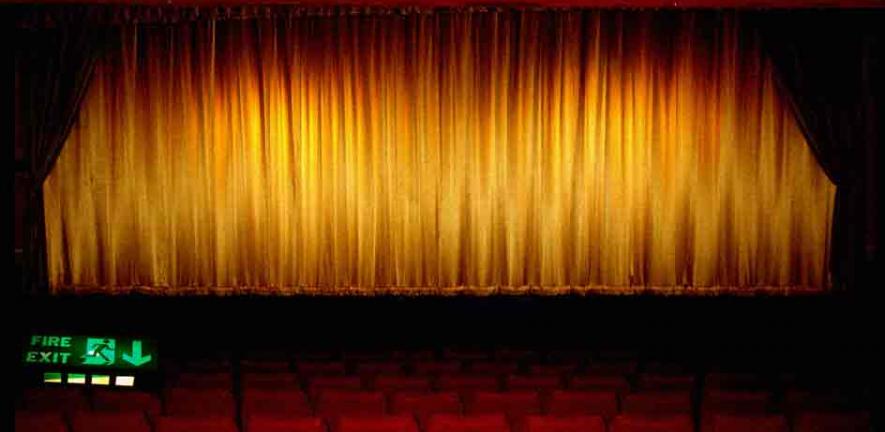
Why have writers been so fascinated by cinema? What role might this 19th-century invention play in the digital age?
Why have writers been so fascinated by cinema? What role might this 19th-century invention play in the digital age?
In cinema, unlike theatre, performer and audience never coincide; for one to be present, the other must be absent.
As applications of digital technology – YouTube, Facebook, Second Life, chatrooms, multiplayer gaming – proliferate all around us, it would be easy to forget that film was once the newest of new media. In the 30 years or so after its invention in 1895, film transformed habits of thought and perception as radically as the internet and the mobile phone have done during the past decade. Contemporary writers, from James Joyce and Virginia Woolf to Grahame Greene, Samuel Beckett, and beyond, observed with passionate interest cinema’s emergence as the 20th-century’s dominant cultural form. Professor David Trotter, of the Faculty of English, has been researching this phenomenon, asking: What did writers see in cinema? Does their response tell us anything about the medium’s enduring capabilities? Will those capabilities complement, contest, or lose out to newer media and newer art-forms?
Machines for seeing
Just why did Joyce, and so many other writers, take an interest in cinema? It seems that they liked everything about it that was mechanical. A machine had captured the images; a machine would project them in front of an audience. In cinema, unlike theatre, performer and audience never coincide; for one to be present, the other must be absent. This gap in time and space permits reflection. The screen is a mirror. The images in which you find your desires and anxieties reflected allow you to reflect on yourself. And these images stir thought, because the camera notices what the human observer would overlook. As the poet Marianne Moore put it, ‘like the lie detector of the criminal court,’ film ‘reveals agitation which the eye fails to see.’
The film camera, a machine for seeing, seemed at once to enact and to invite enquiry into ways of being human for which there was as yet no other adequate definition. Early 20th-century cinema frequently took as its subject a person’s relationship not to another person, or to god, nature, society or nation, but to a tool, instrument, or technology. This is nowhere more apparent than when Charlie Chaplin, hotly pursued, disguises himself as a lampstand or a fairground automaton. Even after the pursuit has moved on, he lingers inside his contraption. He is fascinated by that mechanism in mechanical behaviour which somehow has more life to it than non-mechanical behaviour. When a machine grabs him, as one does in Modern Times (1936), well, that has its fascinations, too.
Representing technique
Cinema reminds us that the history of humanity has always been the history of technology, from the stone axe to the mobile phone. We are, for better or worse, what our machines (our tools) have enabled us to do. There is always, inside our most intimate sense of ourselves, a technique: the knowledge we have acquired, in bits and pieces, often painfully, about how to ‘handle’ life. During its golden age, from the 1920s to the 1950s, Hollywood specialised in representing technique. Fred Astaire and Ginger Rogers enthralled millions because they knew how to dance. And knowing how to dance meant knowing how to live.
Hollywood ‘on the line’
If cinema has tended to embrace technique, it has often been wary of rival technologies. The movies, for example, are deeply suspicious of telephony. Much better to let the phone ring, if you’re in a Hollywood film (but no-one ever does). Answer it, and your life is instantly ‘on the line’. For the call, in these movies, is never not an intrusion. It ruthlessly finds you out in your most private being, with bad news, or threats, or abuse, or the sort of invitation you cannot refuse.
Cinema always wants to describe what’s at stake in these transactions which so unceremoniously abolish physical and moral distance. It does so by the power of the visual image. In film after film, the apparatus itself looms large in the frame, grotesquely brooding until called into action, and then once in action, clamped like an armature or strange protuberance to the talking head. These images reinstate the surrounding world in its material presence: all that we no longer notice when absorbed in the sounds of telecommunication. Even at its most flippant, or programmatically shocking, cinema instructs us about our technological habits. When one of Freddy Krueger’s victims makes the mistake of answering the phone in A Nightmare on Elm Street (1984), the receiver she holds to her face metamorphoses obscenely into his mouth and tongue.
And now?
It’s a common assumption today that the old medium of cinema will sooner or later be rendered obsolete by, or merge into, web-based media applications such as pod-casting and video-streaming. These offer what film cannot: the potential for interactivity and real-time communication at a distance. And yet, as its long campaign against telephony so vividly demonstrates, cinema can offer an entertaining and instructive commentary on the principles which define these new media, and the habits to which they give rise. This is where the time and space it offers for reflection come in. The Matrix (1999) set new standards for digitalised special effects; it exists both as a movie and as a computer game. But by vividly establishing the telephone as the portal between real and virtual worlds, The Matrix invites us to ask just how much interactivity and communication at a distance we really want.
Hollywood films constitute a vast archive – rarely if ever examined from this point of view – of attitudes to and fantasies about the technical self: the self which has been immersed in technique, in technology, and so has become its own tool or instrument. Cinema’s response to the new media has only just started. The digital age awaits its Charlie Chaplin.
Establishing a research and teaching culture in screen media in Cambridge
Screen media – from film, through television and video, to the new digital arts – are currently the focus of a rich and rapidly evolving array of research initiatives in the arts, humanities and social sciences in Cambridge. Reflecting this, an interdisciplinary MPhil in Screen Media and Cultures was launched last year with the participation of departments throughout the University. The MPhil recruits both nationally and internationally, and has become the focus for individual and collaborative research
For more information, please contact the author Professor David Trotter (wdt21@cam.ac.uk) at the Faculty of English.
This work is licensed under a Creative Commons Licence. If you use this content on your site please link back to this page.





